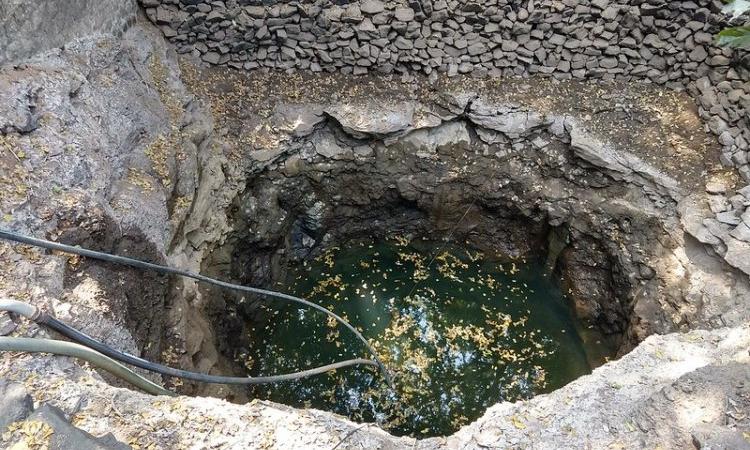
After independence, India was largely food insecure but post Green Revolution around the 1970s, foodgrain production increased manifold consequently reducing food insecurity and poverty in the country, in spite of rapid population growth. Its ability to achieve targeted results was largely dependent on the explosion of groundwater abstraction mechanisms like tubewells. Groundwater development continued unfettered, especially with rise in rural electrification, and an increasing number of aquifers have now reached unsustainable levels of exploitation.
Currently, India is one of the largest exporters of agricultural produce and leads the global charts on virtual water export - most of which comes from groundwater. Now that India’s groundwater table is declining alarmingly across the country, a large number of demand and supply management strategies are being tried out but there are no mechanisms in place to regulate over 20 million wells.
The per capita water availability in India has been constantly dwindling and at the current rate of population increase, and groundwater abstraction, it is predicted that India will be severely water stressed by 2050. Impacts of climate change, already visible as severe droughts and deluges in the same year, is likely to make the situation even worse. Erratic, high intensity, low frequency precipitation will continue to increase run-off, which will eventually affect groundwater recharge.
The pressure of 17% of the global population that resides in India on meagre 4% of the total water resources has unleashed problems of quality, quantity, equity, access, and overall sustainability. India has one of the worst water quality conditions in the world resulting both from geogenic contamination (fluoride, arsenic, etc.) and biological contamination, mostly as a result of human actions.
Emerging directions for groundwater management
Managing groundwater has been a mammoth task for all countries - large and small, and several strategies have been tried out for better, more efficient groundwater management. Command and control strategies to regulate extraction of groundwater have been implemented in pockets in India but for a country of this size, enforcement of regulations is a big challenge.
Community-based groundwater management approaches have shown positive results given the strong social capital in most rural areas of the country. But making this approach work has meant intensive and long engagement of one or the other resource/ expert organizations - the paucity of which have hindered scale-up of such models. Many developed countries have tried market-based methods to regulate groundwater extraction and use but with largely unregulated and informal water markets both for irrigation and domestic uses, it is less likely to work in a developing country like India.
Supply augmentation has been a focus of India’s governments and civil society organizations for the last four decades with several watershed programs dotting the water management landscape of India since the 1950s. Even though estimation of Managed Aquifer Recharge (MAR) potential has been a challenge, it can be safely said that India has the largest MAR potential in the world. MAR is the intentional recharge of aquifers by directing flow of surface water into them for their subsequent recovery.
In India, it has been achieved by increasing the surface area of water harvesting bodies (like tanks) through desiltation, slowing down flow of water along a slope through trenches, field bunding, gully plugging etc. But without efficient demand management, recharge measures solely cannot keep groundwater from declining. The government has promoted water saving technologies like drip and sprinklers in agriculture, incentivized less-water intensive crops through subsidies and the agricultural policy of Minimum Support Price but their effectiveness in demand management is yet to be ascertained.
India has drafted three water policies since independence and the focus has shifted from provisioning of basic water and sanitation services to people in 1987 to use of data for better decision making in 2012. Guidelines of the policies, however, have not been translated to action on the ground. Recommended authorities at basin-level have not been created so far and the role of communities in water management has not shaped up as recommended. Poor investment in developing capacities of community-level functionaries, fragmented accountabilities between agencies, and externalities caused by other policies and programs (energy, food etc.) are some issues that need to be resolved in the next National Water Policy, which is expected to be drafted in 2020.
Meanwhile, as water users, every person - whether residing in urban or rural area - needs to understand the importance of reducing consumption, promoting recycling and reuse, preventing contamination and pollution, and increasing awareness of fellow users on water related issues. After all, in a country with nearly 1.4 billion people, every drop can make a difference.